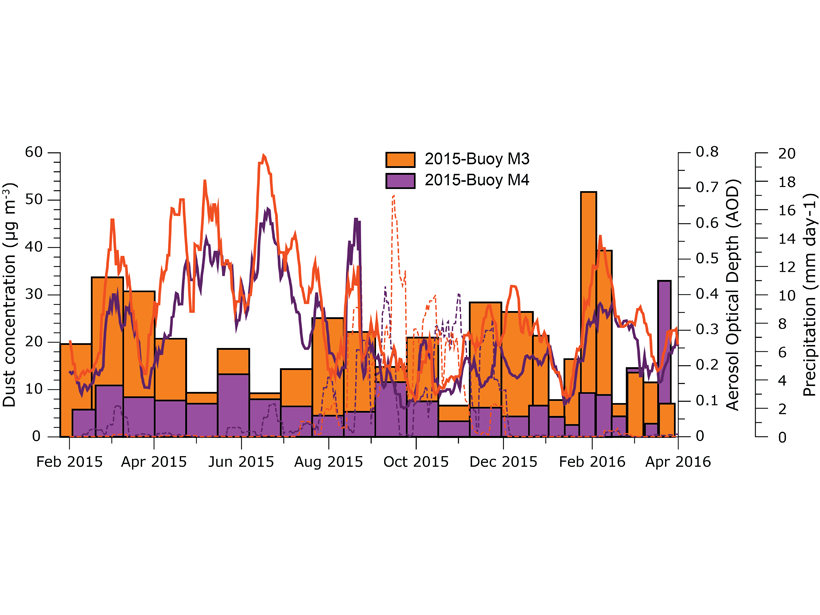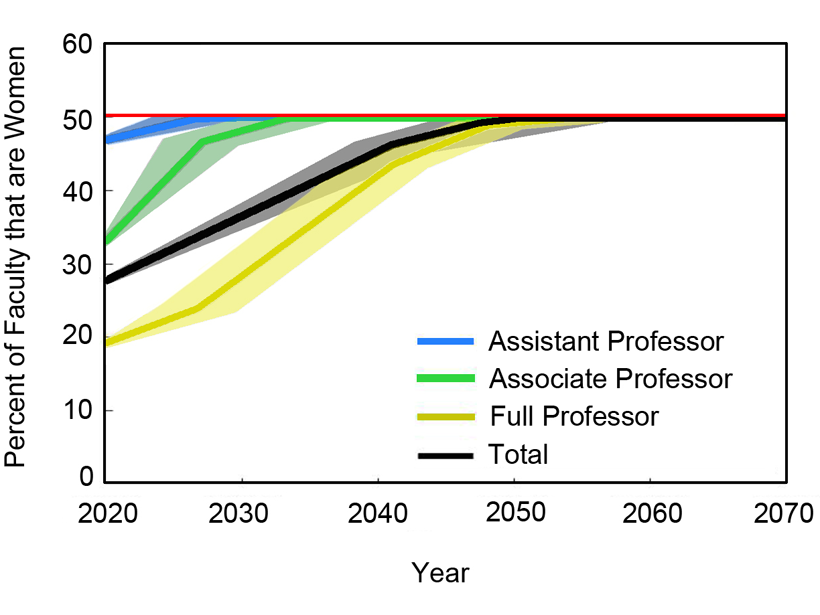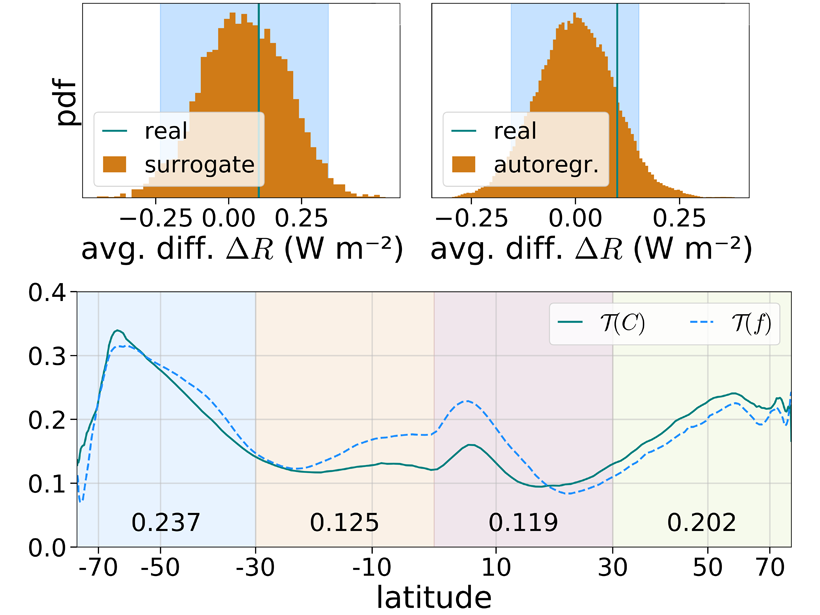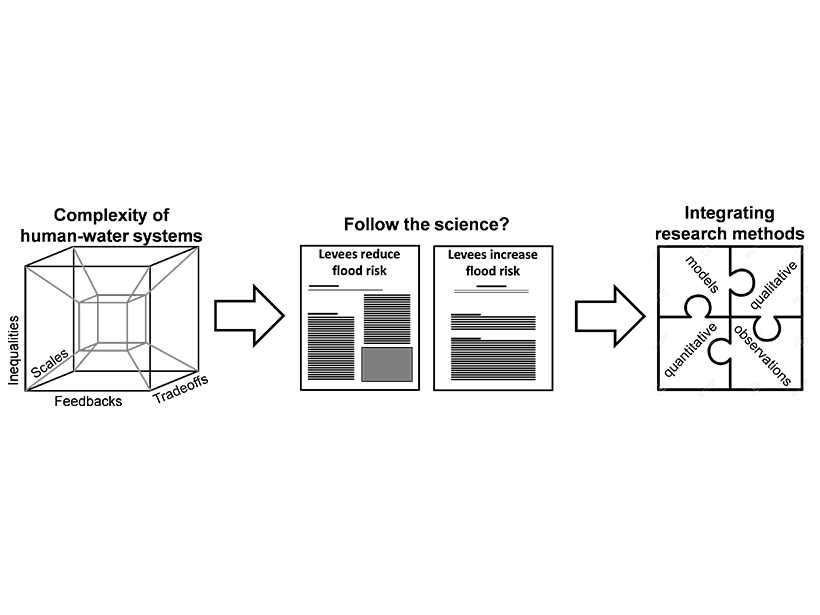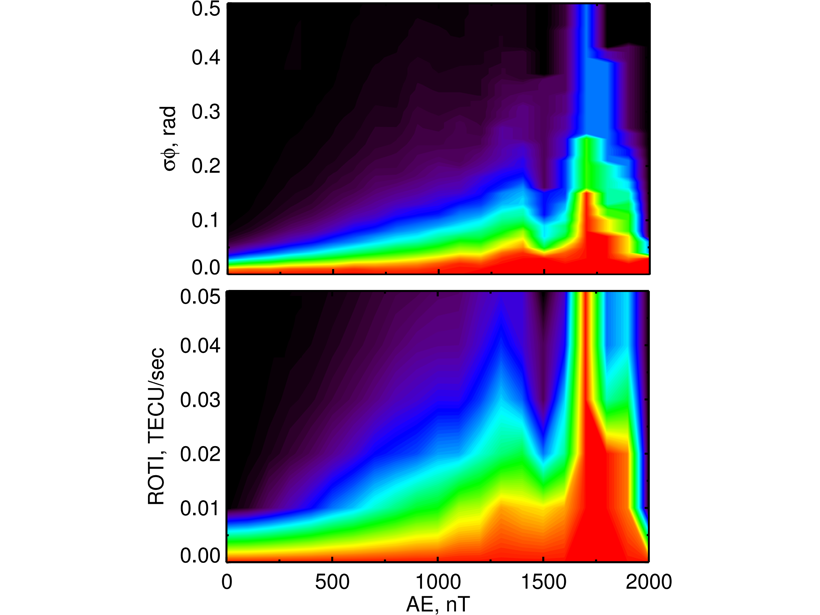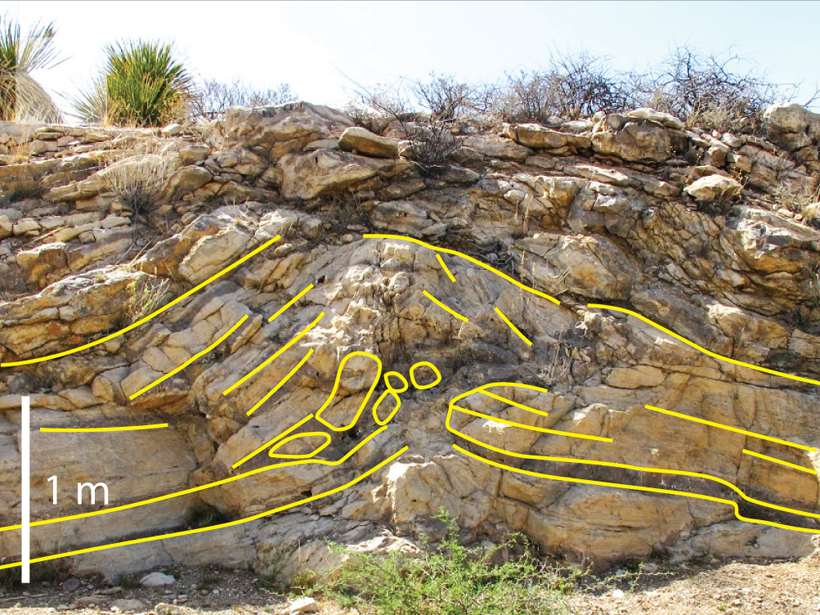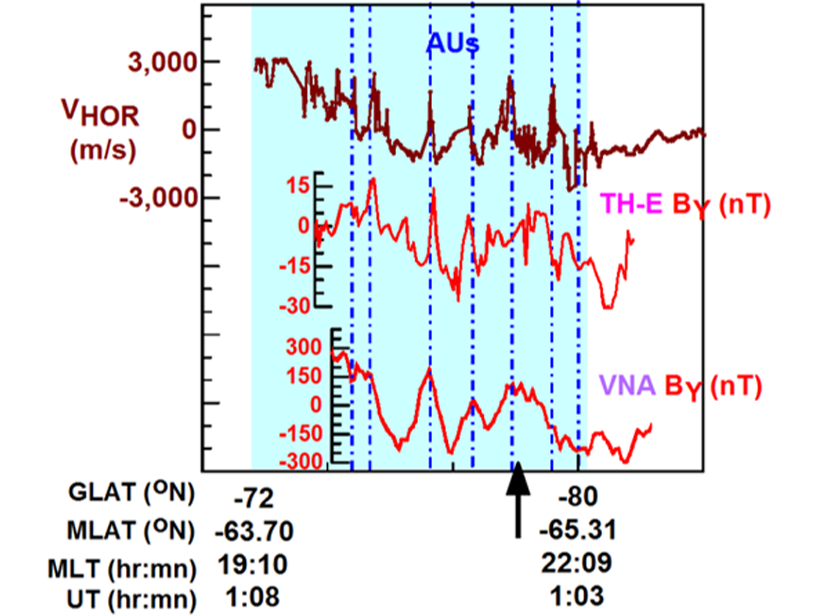The first time series of bi-weekly dust concentrations measured in-situ across the remote Atlantic Ocean.
Editors’ Highlights
Looking Down to See Upwards
Hydrological observations of cosmic ray neutrons scattered by water in soil can also provide information on space weather events such as Forbush decreases and ground level enhancements.
Magnetic Record of Early Nebular Dynamics
Magnetized particles in a meteorite suggest strong magnetic fields in the early solar nebula.
Steady but Slow Progress on the Long Road Towards Gender Parity
The historic disproportionate attrition of women among geoscience faculty is decreasing, but how long will it take to reach gender parity if current trends of progress continue?
Is Earth’s Albedo Symmetric Between the Hemispheres?
The two hemispheres feature the same planetary albedo despite a larger land fraction in the north, because storms over the southern ocean are cloudier than their northern counterparts.
Need for Rational Thinking for Predicting Floods and Droughts
To plan policies that manage flood and drought risk, is it sufficient to follow the science? The better path uses the best science, which draws insight from integrated multidisciplinary research.
The Auroral E-region is a Source for Ionospheric Scintillation
Observations reveal a connection between auroral particle precipitation and scintillation, indicating that the ionospheric E-region is a key source region for phase scintillation at auroral latitudes.
Sedimentary Tepees Record Ocean Chemistry
Sedimentary structures from evaporative coastal environments indicate carbonate saturation, offer insight in mid-Mesozoic ocean chemistry and potentially even earlier times.
Satellite Data Reveal Magnetospause K-H Waves Impact Auroras
Analysis of multiple satellite data has revealed a striking connection between K-H waves on the magnetopause, surface waves in the hot zone near the plasmapause, and auroral undulations.
The Great Unconformities?
New thermochronology data and thermal history modeling from the Canadian Shield show that the Great Unconformity formed there later than elsewhere in North America and may represent another event.

